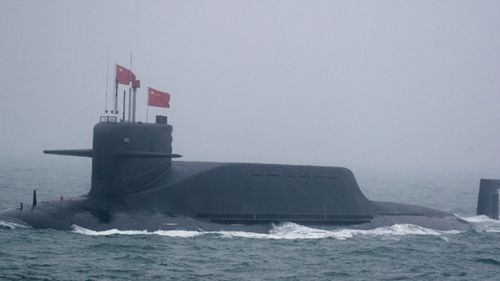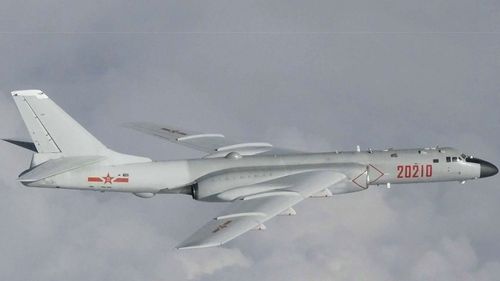That is a rise from last year’s $261 billion, which was a 6.6 per cent rise on the year before.

Australian security expert Sam Roggeveen told nine.com.au China’s military expansion remains the major factor shaping Federal Government policy.
“China is absolutely critical to shaping our defence policy in the years ahead,” Dr Roggeveen, Lowy Institute director of international security, said.
The big-spending increases of years past have given China the second-largest defence budget in the world behind the US.
With three million troops, the world’s largest standing military has been steadily adding aircraft carriers, nuclear-powered submarines and stealth fighters to its arsenal.
Dr Roggeveen said the modernisation and expansion of Chinese maritime forces is of particular concern for Australia.

“China now has the largest navy in the world in terms of ships, even thought some are of variable quality,” Dr Roggeveen said.
China’s military expansion under President Xi Jinping is largely designed to exert pressure on Taiwan and bring it under it Beijing’s control.
But the South China Sea is another area where China is flexing its military muscle.
“Expanded maritime air power has also been increased over recent years,” Dr Roggeveen said.
“China has built land-based medium-range bombers that can reach targets thousands of kilometres away.”
Last year the Federal Government said it would increase Australian defence spending by 40 per cent over the next 10 years to buy longer-range strike capabilities across air, sea and land.

Dr Roggeveen said these included long-range hypersonic missiles being developed with the US.
The first of the submarines to replace Australia’s ageing Collins-class fleet is not expected until 2034, with the last due by 2054.
“There long-range capability is strategically vital for Australia,” Dr Roggeveen said.
“And the length of time until they enter service is of concern.”
Mr Biden will use the Quadrilateral Security Dialogue to build cooperation with US allies to counter China’s strength in the Asia Pacific region.
This content first appear on 9news

